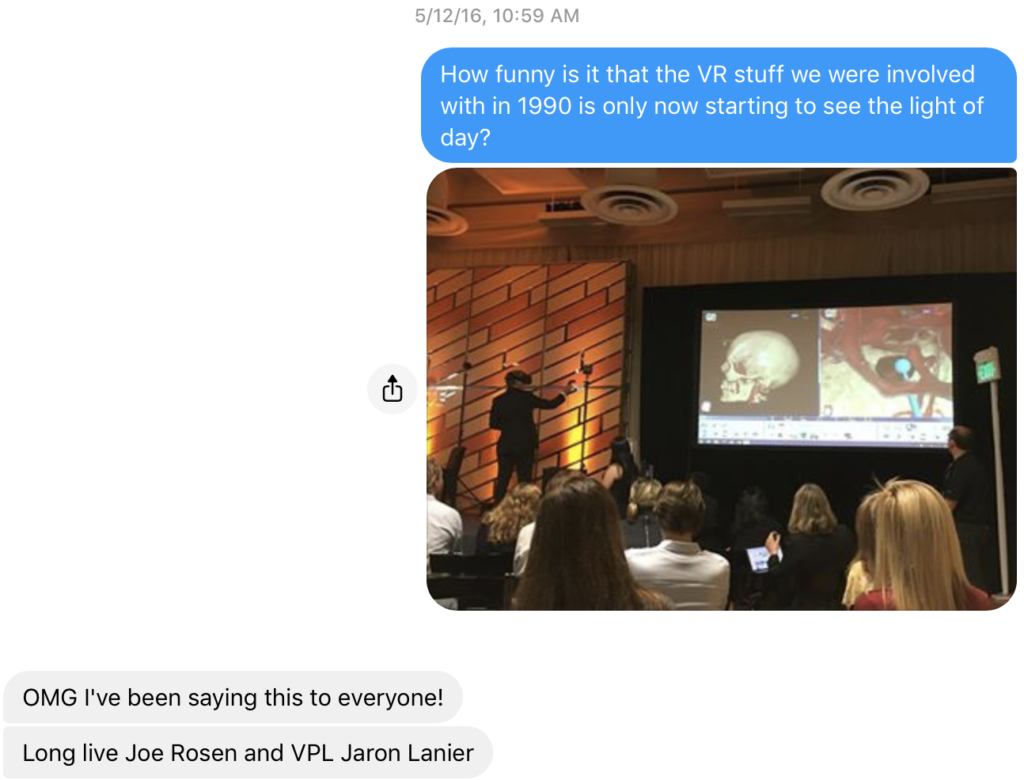
In 1990, as a freshman at Stanford, I got involved in research at VPL Research, the first company to sell virtual reality goggles and gloves. My project was to study the applications of virtual reality to surgery. Specifically, my classmate and I used an MRI machine to scan our hands, and create a mathematical model of our hands that could be controlled later by someone wearing a glove lined with dozens of motion sensors. Our goal was to see if a person wearing 3D goggles and a motion sensor on their head could “see” a virtual intestine with a virtual cancer on it, and act out surgically removing the cancer and suturing up the two good ends of the intestine If so, then surgeons could practice surgeries in medical school, or practice before performing a surgery in real life, or perform surgery remotely with a robot arm on Mars following the surgeon’s every move back on earth.
This is an example of telepresence, 30 years ago. Candidly, this is one technology where things haven’t changed much.
For me, telepresence is about a local expert helping with a remote situation. Bomgar (acquired by BeyondTrust) offers remote support, to help troubleshoot any remote device. This certainly qualifies, and is a great business.
At the same time, there are more than technical hurdles to telepresence. In 2002, I wrote about contingency planning for the next September 11, and quoted the cautionary wisdom of a logistics godfather:
“If you had an inefficient meeting before, it’s really going to be disastrous if you try to do it telecommunicating.”
Where do you see quantifiable use cases for telepresence? Please visit my office hours and continue this conversation.